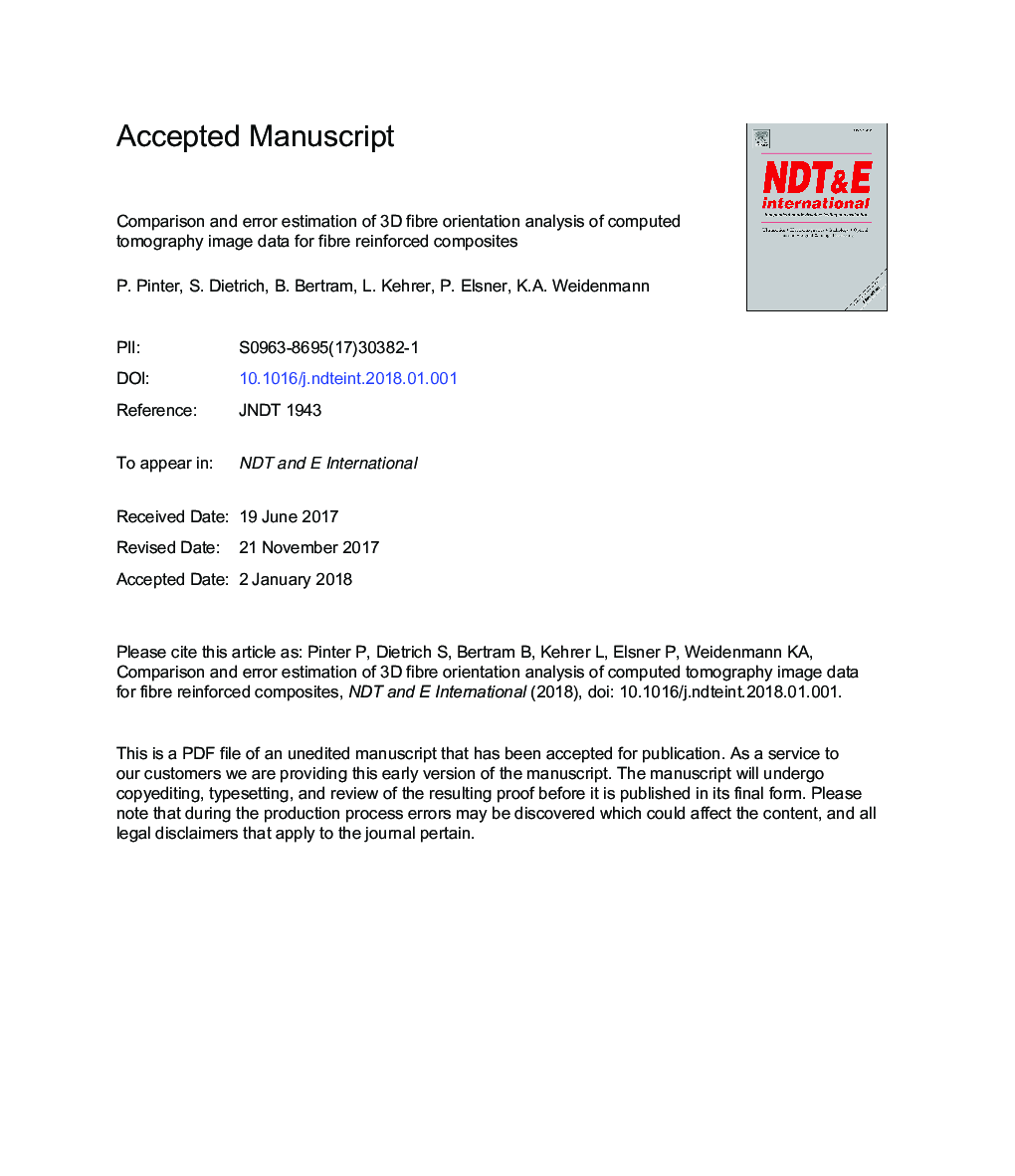| Article ID | Journal | Published Year | Pages | File Type |
|---|---|---|---|---|
| 6758272 | NDT & E International | 2018 | 28 Pages |
Abstract
Fibre orientation represents one of the most important micro-structural characteristics for fibre reinforced composite materials. Its influence on mechanical behaviour, material anisotropy and damage evolution has, especially with the modern trend to mass production of structural composite parts, moved back into the focus of micro-structural analysis. Following this development and the enormous improvements of X-ray computed tomography resolution and evaluation techniques in the field of composites the 3D analysis of fibre orientations throughout macroscopic components has become possible. Therefore, the complex connection between manufacturing process and manifested fibre architecture can be determined and correlated. Various image analysis methods exist in the material science and image analysis community which can be employed to extract fibre orientations of an image. In this work we compare three methods based on anisotropic Gaussian filtering, Hessian matrix calculation or structure tensor calculation in their ability to describe correct fibre orientations and their error-proneness with respect to imaging modalities and material composition. Those methods have become popular also in commercial software platforms for micro-structure analysis in user-friendly forms. All three algorithms were implemented with the open source imaging tool-kit ITK. In order to compare those methods, error estimates and testing procedures will be described herein.
Keywords
Related Topics
Physical Sciences and Engineering
Engineering
Civil and Structural Engineering
Authors
P. Pinter, S. Dietrich, B. Bertram, L. Kehrer, P. Elsner, K.A. Weidenmann,
